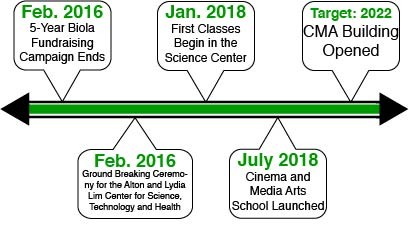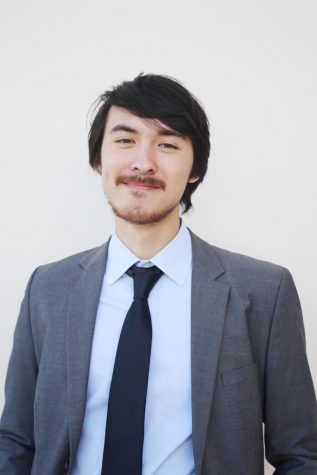Administration will focus on building students’ careers, increasing enrollment and expanding academic offerings in growing fields as it reaches the midway point of its 10-year University Plan.
HALFWAY THERE
The Board of Trustees approved a vision statement outlining the direction of the university for the following 10 years in Sep. 2012. The plan mentions seven aspirations for administration to follow, including “Build a Cross-Cultural Community” and “Cultivate Competent and Courageous Graduates.” The President’s Cabinet also follows a yearly strategic plan which serves as a guide for specific steps in following the University Plan.
The university must continuously adapt to changing trends and circumstances by reevaluating how it enacts its plans, according to senior director of new business ventures and university planning David Shynn. He also believes President Barry Corey has sought to hold true to Biola’s mission of providing a biblically integrated education even as other universities have moved away from Christian convictions in response to challenges.
“Even as we look toward moving into the future, growing in new ways, both in headcount and program reach, global reach and so forth, the one thing [Corey] really wanted to make sure was front and center was the fact that we weren’t going to be straying away from who we are,” Shynn said.
Administration has sought to attain this goal by training faculty to more thoroughly consider how they integrate their faith into the core curriculum.
The University Plan also seeks to see a total enrollment of 10,000 students by 2022, up from 6,172 in Fall 2017. Shynn believes administration’s investments in cinema and media arts, business and science will draw prospective students to Biola. These investments include the board’s approval of additional funding for these academic areas, the recent opening of the Alton and Lydia Lim Center for Science, Technology and Health and the announcement of a CMA school.
“One of the ways we’re thinking about this is how to invest in the most in-demand programs right now so that those programs have proper levels of facilities, faculty funding, etcetera,” Shynn said. “We’re hopeful that with those new programs and the new facilities, etcetera, that that’ll spur… growth in those areas.”
YEARLY PLAN SEEKS TO PREPARE STUDENTS
To fund these initiatives, vice president of university management Adam Morris, who also constructs the yearly strategic plan, is preparing to recommend to the board of directors a program for the next fundraising campaign. This goal coincides with the University Plan aspiration to ensure the affordability of a Biola education.
“[It’s] super important to me that the initiatives in the next campaign are linked to the fulfillment of the University Plan, so I wouldn’t want us to feel like the last campaign accomplished everything there is to accomplish in the University Plan. It has moved the needle significantly in the right direction, but there’s a ton of work left to do,” Morris said.
The creation of career preparation for students remains another aspect of the 2017-18 strategic plan, according to director of career development and success Tiffany Lee. For instance, the Career Center has been establishing connections with potential employers and will launch a series of videos teaching students how to engage with the professional field in early 2018.
“By expanding employer relationships and increasing access to opportunities, students have more opportunities to build career skills and apply their classroom learning in the field, ultimately producing more competent graduates (Aspiration #4) that will go out and impact the world for Christ,” Lee said in an email.
Due to developments such as this, Morris believes the university will thrive as it pursues the second half of its 10-year plan.
“I couldn’t be more encouraged… 27 years I’ve worked here and [I] feel like we are at a unique place in Biola’s history, with incredible momentum that has been built [and] continues to be built,” Morris said. “I just feel like we are poised to just do great things.”








